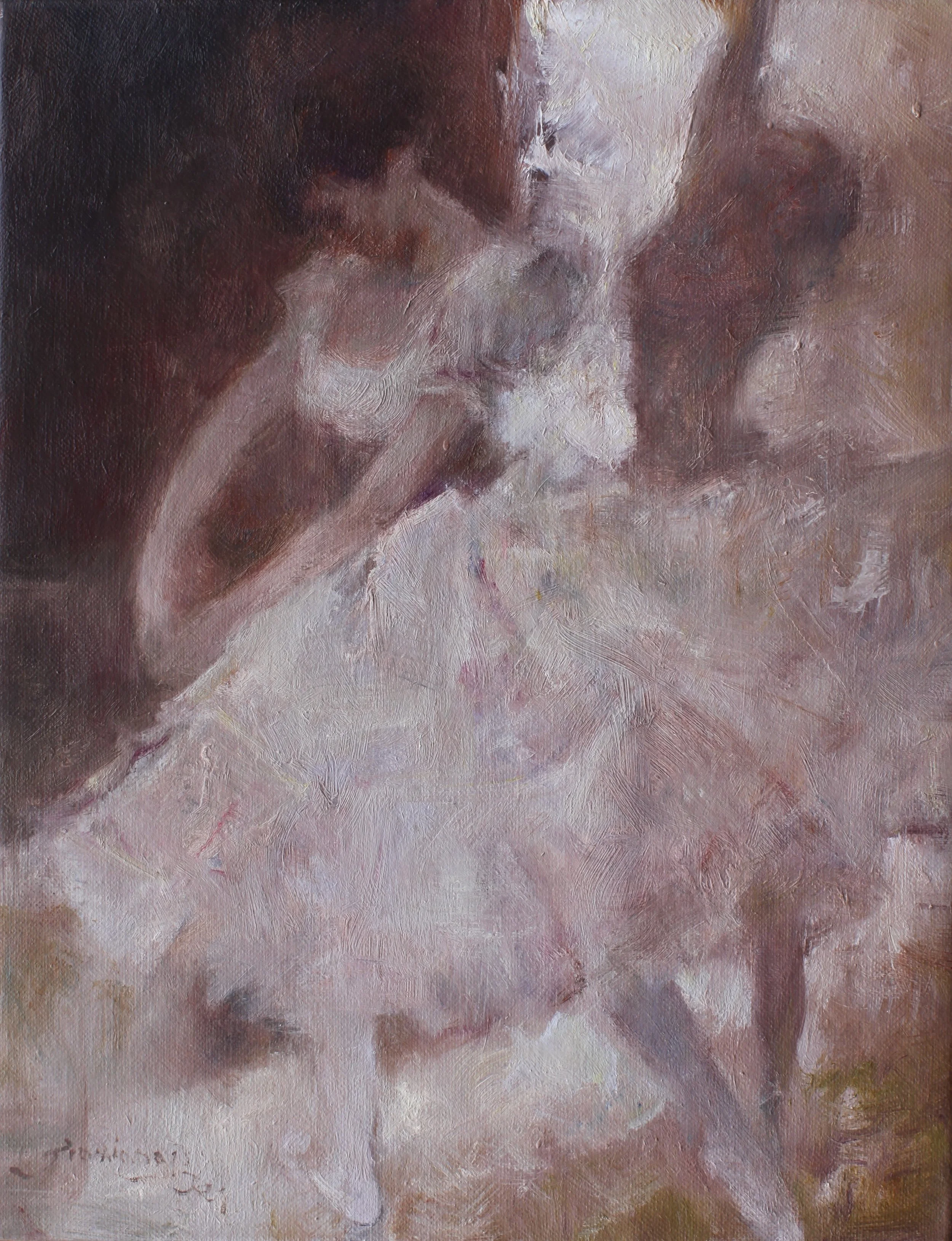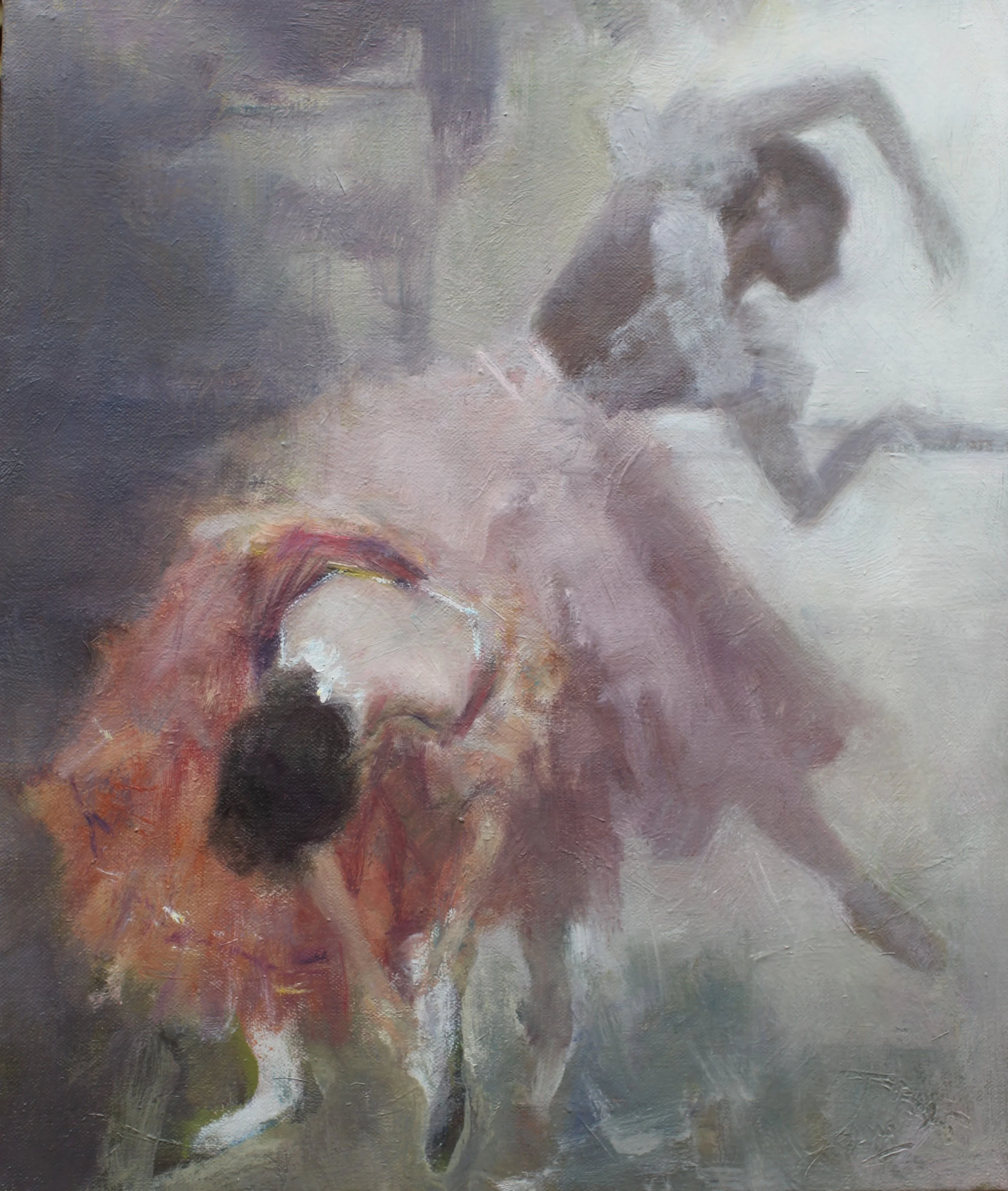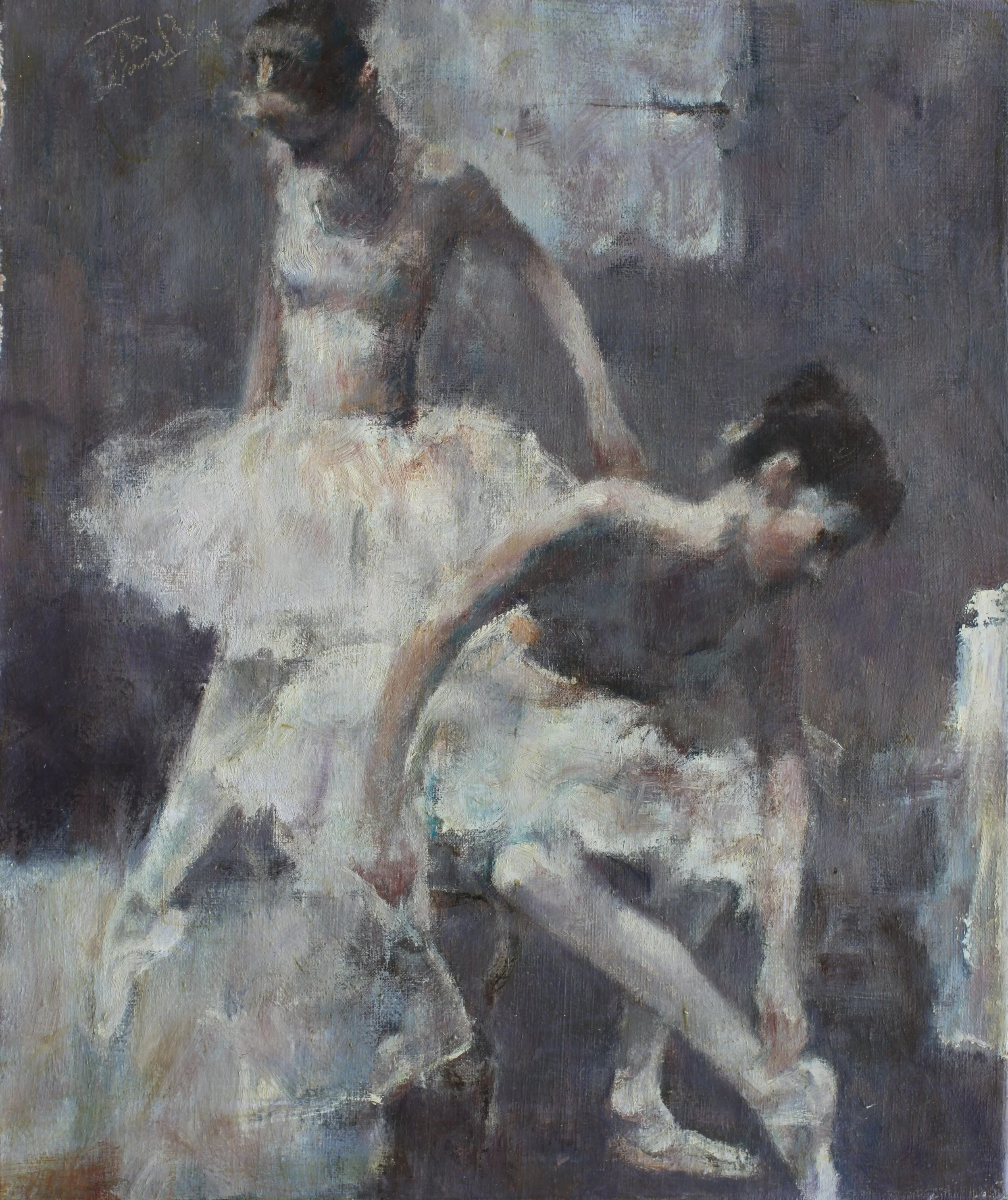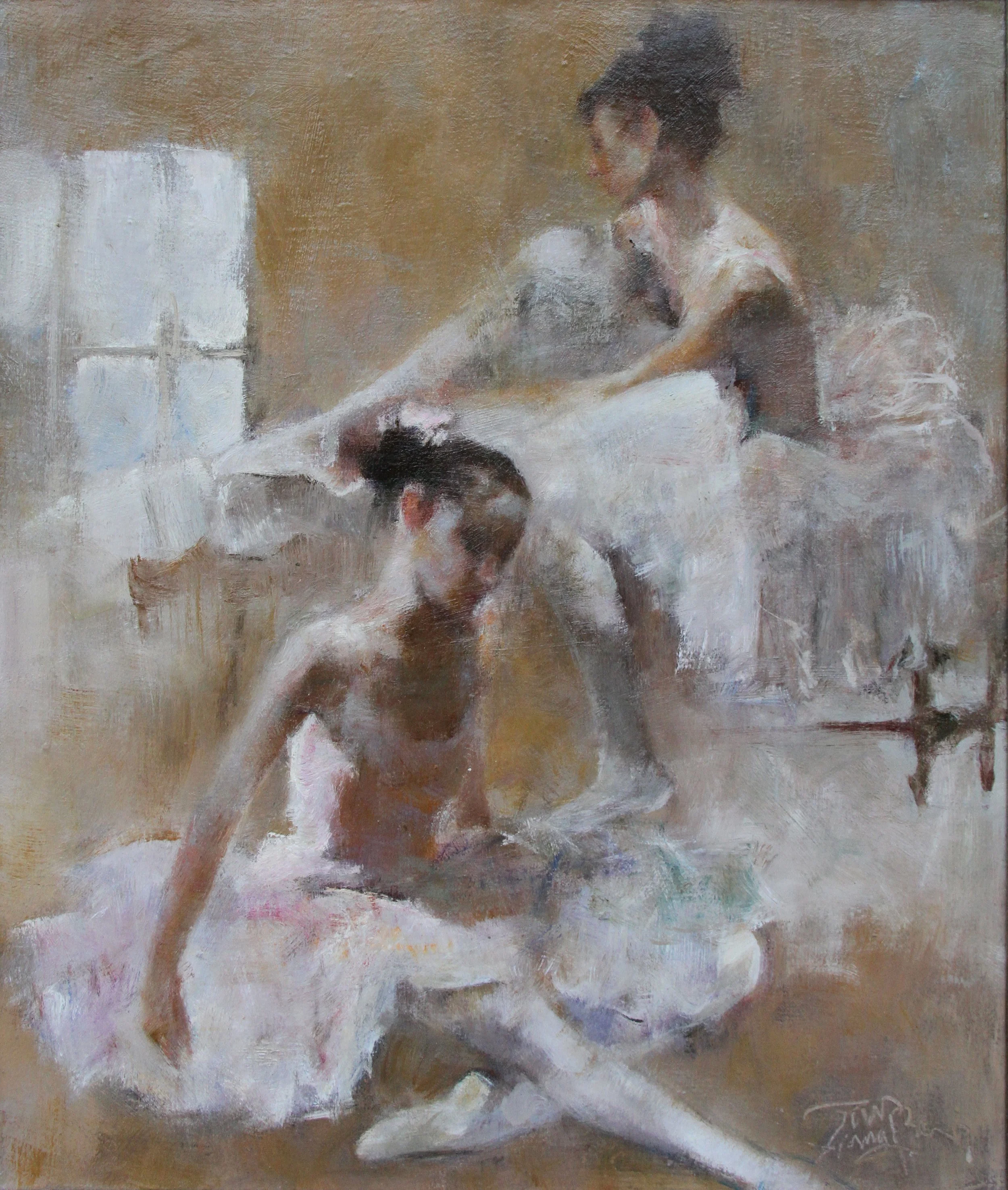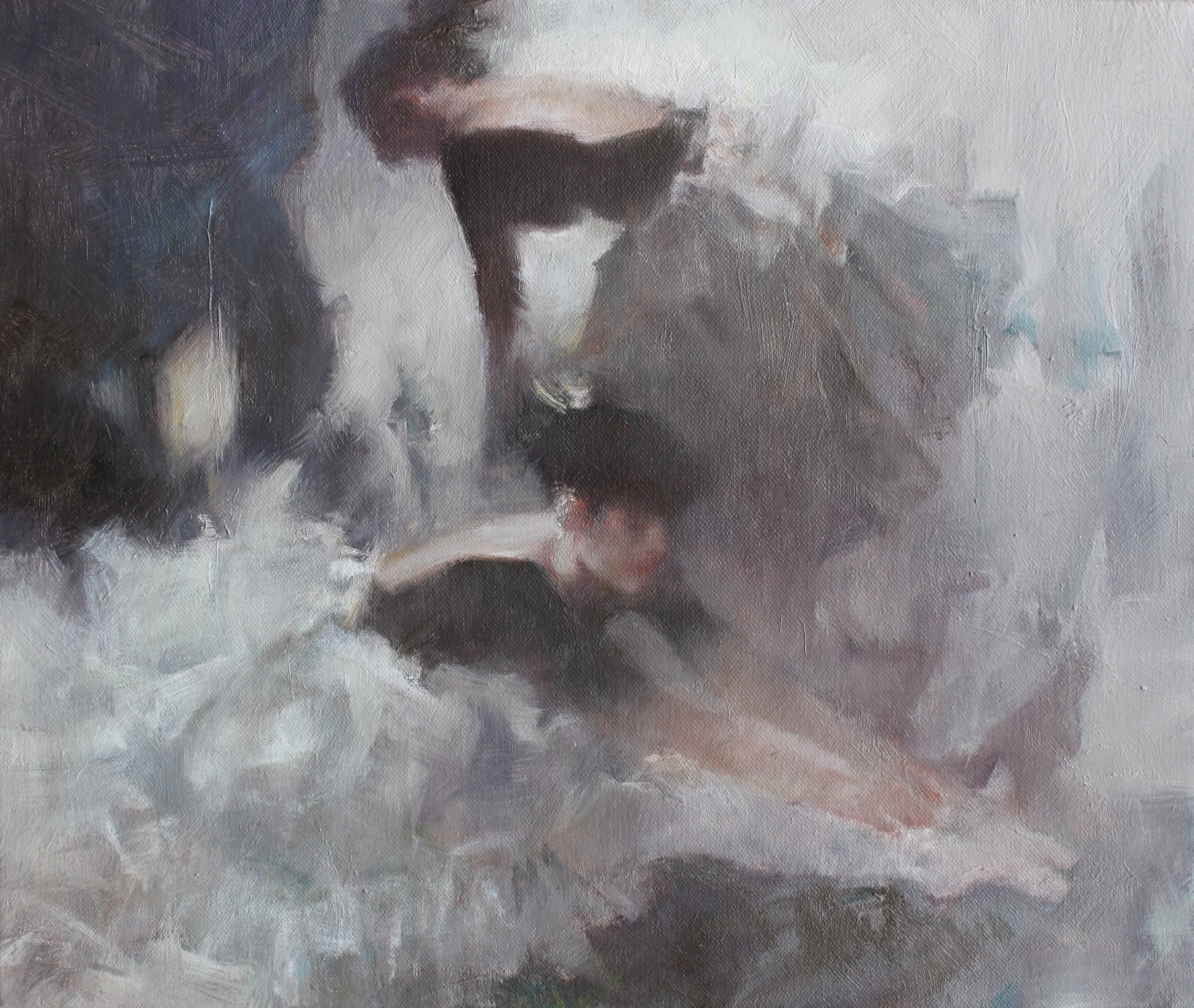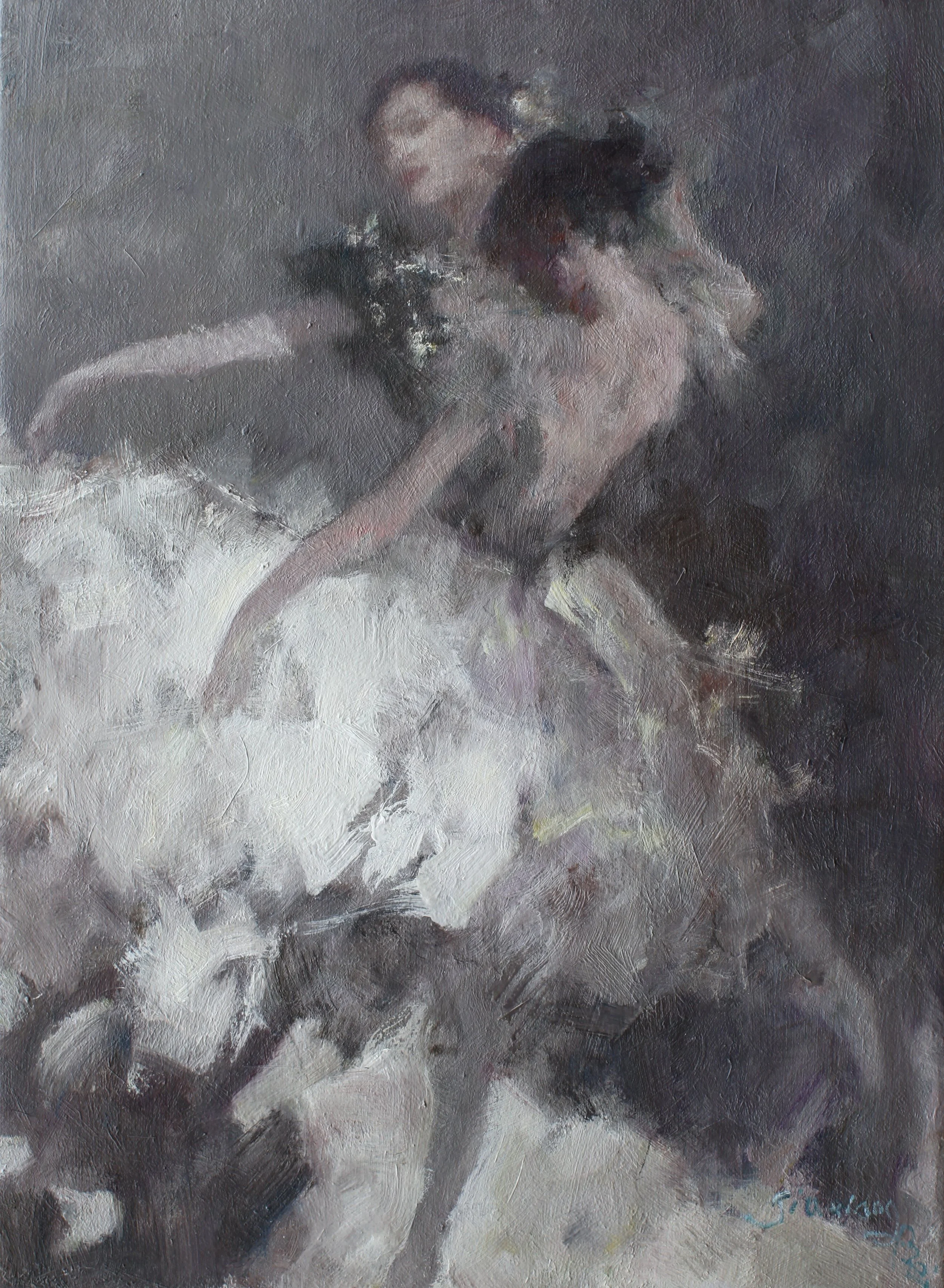
The power and beauty of the body explore the boundaries of space in an elegant manner.
“What I am concerned with is not the dance itself, but the relationship between movement and space.”
— Edgar Degas
-

Silhouette (Collected)
Oil on Canvas
75×102 cm
2014
-
Swan
Oil on Canvas
34×46 cm
2015
-
Young Dream
Oil on Canvas
32×42 cm
2015
-
Rosary
Oil on Canvas
39×46 cm
2015
-
Backstage (Collected)
Oil on Canvas
38×46 cm
2015
-
Behind the Velvet (Collected)
Oil on Canvas
37×40cm
2014
-
Odette's Awakening (Collected)
Oil on Canvas
48×47 cm
2014
-
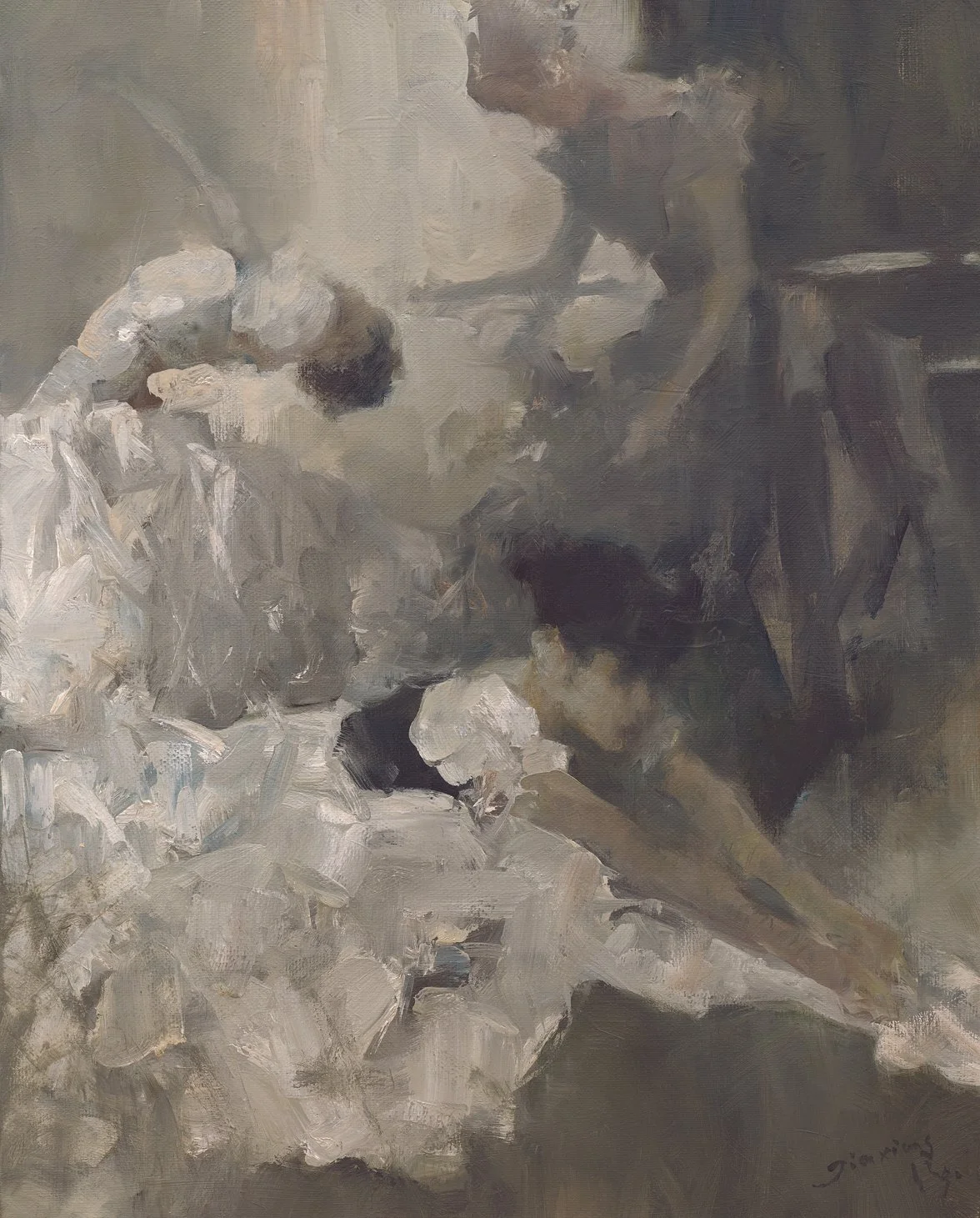
In the Wings (Collected)
Oil on Canvas
61×76 cm
2014
-
Stretching
Oil on Canvas
46×39 cm
2015

Artwork Interpretation
The Authenticity of Imagery
BEI Jiaxiang’s Ballet series of oil paintings use low-to-high saturation color blocks and flattened space as its core language, creating a tranquil aesthetic of a ballet studio through the contrast between pure colors like white, gold, and blue, and the subtle tones of the background.
As a classic interpreter of the ballet subject, Degas captured the myriad aspects of life at the Paris Opera in the 19th century from a realist perspective. Through complex spatial layering, dynamic cutting and gradations of light and shadow, realistic depictions of clothing folds and facial expressions, he recorded the authentic moments of dancers training and performing, as the metaphors for the lower classes in a way. In contrast, BEI’s works present a distinctly different aesthetic preference.
The dancers’ facial details are blurred or even disappear, and the outlines of their bodies are sketched with bold strokes, resembling the unrestrained nature of Fauvism while also incorporating the fluidity of ink dripping. The depiction of ballet costumes is further simplified to color blocks that are almost basic geometric shapes. The composition often features a binary dynamic superposition of one standing and one sitting figure, seeking rhythm and balance in the picture, while the blurring of the background not only follows the ethereal quality of traditional ink painting but also represents BEI’s paring down of his painting language for refinement. In this “de-individualization” experiment, he attempts to convey more collective information with minimal strokes.
BEI Jiaxiang’s Ballet series continues the innovative genes of the Shanghai modernism movement of the early 20th century, and is a typical example of the “inclusiveness” of Shanghai Art School oil painting in contemporary transformation. Compared to Degas’s faithful record of realistic moments, BEI emphasizes the reality of imagery. He uses color and brushstrokes to directly convey the essence of emotion, exploring the contemporaneity of cross-cultural aesthetics on the boundary between representational and abstract art.


